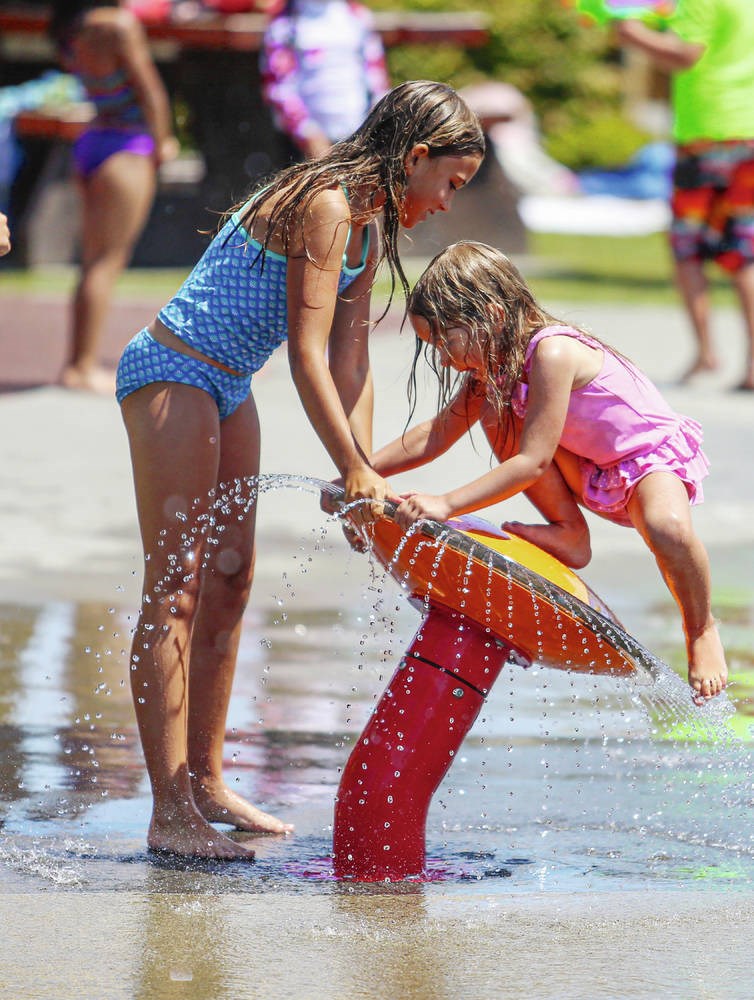The province says the east side of Vancouver Island is in a serious drought, though Peter Luckham doesn’t need the government to convince him of that.
He got a good-but-grim reminder when he and his pals in the Thetis Island volunteer fire department tried to draw water from a pond, only to find that the water level had fallen below the intake. Yikes.
Luckham, as chairman of the Islands Trust council, also hears plenty from the residents of the Gulf Islands, where periodic water worries are even worse this year. It’s particularly severe in the south. Wells threaten to run dry as groundwater tables fall. On Salt Spring, the most populous island, many of the 10,000 residents rely on water from St. Mary Lake, which is flirting with historic lows for this time of year.
Meanwhile, there’s real concern for the fate of the fish in the creeks and rivers that flow toward the strait from the spine of Vancouver Island. The low-flow episodes occasionally seen in recent summers came earlier than usual this year, which when combined with high temperatures has observers fearing for juvenile salmon. When the heat dome baked B.C. a couple of weeks ago, river temperatures spiked as high as 27 C. They’re down to 22 to 24 now, but that’s still at the threshold that can be lethal to fish, says Dave Campbell, the head of the province’s River Forecast Centre. It doesn’t help that the lower water volumes have left fish with fewer places to seek refuge.
Meanwhile, it hasn’t rained at Victoria airport since June 15. That followed the driest spring on record there, with only 32 per cent of the normal precipitation recorded from March through May. (The Gonzales station was higher — 74 per cent — but still lower than normal.)
Now, we have been through droughts before. Indeed, Victoria can be the driest place in Canada during the summer. We moaned about the lack of rain in 2019 and 2015 (until it got wet again, and then we moaned about that). In 1951 the Daily Colonist helped bring in a Prairie rainmaker who arrived with a moisture-making contraption that the rival Times dismissed as “a 50-pound moonpowered mystery machine.”
But somehow this time feels different. Maybe that’s because, after a year and a half of COVID, we have taken to flinching every time Mother Nature peeks around a corner. (What’s next, a plague of toads?) Or maybe we’re still shaken from that out-of-nowhere heat dome with its human toll, forest fires, buckled sidewalks, Lytton and the kill-off of maybe a billion shellfish.
(“Who would have guessed that we would have the highest temperatures in history on a day when the tide was out?” Luckham asks.) Or maybe we’re worried about climate change and the idea that what we’re dealing with right now is just an opening chapter, not the whole book.
In Victoria, residents are fortunate that, back in the early 2000s, the authorities raised the Sooke Lake reservoir, which is replenished by rains each winter. It’s at 83.5 per cent capacity, not much lower than is usual for this time of year. “We’re not concerned at this point,” says Ted Robbins, who oversees the CRD’s water systems.
Note, Robbins says, that people in the region use less water per capita now than they did two decades ago, when outdoor irrigation accounted for much of the total. Many continued to lay off the lawn-watering even after the end of severe restrictions — no filling pools or hot tubs, no power-washing driveways — introduced in 2001. Asked to cut water use to 40 million gallons a day that year, residents reduced it to 35 million instead.
That shows people can make a difference. The authorities offer tips: fix leaky hoses, pull weeds (they compete for water), add a couple of inches of mulch around plants, place a bucket under the shower head while waiting for the water to run hot, and don’t let the water run needlessly (it was once estimated that if everybody in Victoria shut off the water while shaving or brushing their teeth for just one day, the savings would fill the Crystal Pool). Sweep your driveway instead of washing it. “The bottom line is we have to conserve,” Luckham says.
And don’t forget the advice offered by the legendary Ma Murray to readers of the Alaska Highway News during a dry spell in Fort St. John in 1946: “Only flush for No. 2, curtail bathing to the Saturday-night tub, go back to the old washrag, which could always move a lot of B.O. if applied often enough.”
- - -
To comment on this article, email a letter to the editor: [email protected]



